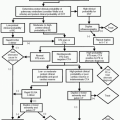Liver Transplantation
Christopher L. Smith
Since the first liver transplantation was successfully performed by Thomas Starzl in 1967, orthotopic liver transplantation (OLT) has become an accepted means for the treatment of end-stage liver disease. One of the major indications for liver transplantation is cirrhosis with portal hypertension. The causes of the cirrhosis are many, including alcoholism, hepatitis, primary sclerosing cholangitis, primary biliary cirrhosis, and Wilson’s disease. An emerging indication for transplantation is in treatment for hepatocellular carcinoma. In the pediatric population, the most common indications are biliary atresia and á1-antitrypsin deficiency. In addition, a small percentage of transplantations are performed for acute hepatic failure.
Indications
The preoperative evaluation of both the donor and the recipient is important.
Transplant Recipient.
The objective of imaging the potential transplant recipient include evaluating the severity of the cirrhosis and associated portal hypertension, identifying conditions that may complicate the surgery or preclude transplantation, and to identifying tumor, both in the cirrhotic liver and in extrahepatic malignancy. Imaging modalities that are routinely employed in this evaluation include ultrasonography (US), computed tomography (CT), and magnetic resonance imaging (MRI). Advancements in CT and MRI have decreased the utilization of angiography.
When imaging the potential recipient, depending on the etiology of the cirrhosis, some hepatic morphologic changes can be identified on imaging which could suggest the etiology of cirrhosis. Additionally, one major role in the pretransplantation imaging is to identify vascular anomalies or pathology that may preclude transplantation. It is also important to document the patency of the hepatic vessels. One other important indication is to assess for the presence of hepatocellular carcinoma and if present, to perform accurate staging. Angiography, either computed tomography angiography (CTA), magnetic resonance angiography (MRA), or conventional angiography may be required in pediatric patients with known or suspected vascular anomalies or in the asplenia and polysplenia syndromes.
Transplant Donor.
The goals of imaging the potential liver donor are to evaluate the liver parenchyma, provide data for split-liver volume assessment, and to define the liver vascular map (both intra- and extrahepatic vasculature). Both CT and MRI have been used for this evaluation. Another important objective is to evaluate the biliary tree to assess for anatomic variants. Magnetic resonance (MR) cholangiography has been reported to provide excellent definition of the biliary anatomy.
Orthotopic Liver Transplantation.
The conventional form of OLT requires suprahepatic and infrahepatic anastomoses to the native inferior vena cava (IVC). Recently, a
new technique has been developed for hepatic venous anastomosis known as the piggy-back technique. This involves preservation of the entire retrohepatic vena cava with anastomosis of the new liver to a cuff formed from one or more of the main suprahepatic veins. Both forms involve an anastomosis of the recipient to donor portal vein, hepatic artery, and biliary tree. The arterial and biliary anastomoses are the most frequently problematic, generating most postoperative complications.
new technique has been developed for hepatic venous anastomosis known as the piggy-back technique. This involves preservation of the entire retrohepatic vena cava with anastomosis of the new liver to a cuff formed from one or more of the main suprahepatic veins. Both forms involve an anastomosis of the recipient to donor portal vein, hepatic artery, and biliary tree. The arterial and biliary anastomoses are the most frequently problematic, generating most postoperative complications.
The arterial anastomosis between the donor and recipient is usually end-to-end and the site usually varies depending on the arterial anatomy and the surgeon’s preference. A common recipient site of arterial anastomosis is the bifurcation of the hepatic artery into right and left branches. If this is not feasible, the next most common site is at the branch point of the gastroduodenal artery from the common hepatic artery. Less preferred, but occasionally performed, is a donor iliac arterial graft from the infrarenal aorta to the allograft.
The common bile duct is usually connected through end-to-end choledochocholedochostomy or to a loop of jejunum (Roux-en-Y choledochojejunostomy). The former option is generally preferred, as there is a higher incidence of anastomotic breakdown with the Roux-en-Y technique. Choledochojejunostomy is reserved for children, patients with sclerosing cholangitis, revisions of previous choledochocholedochostomies, and in cases where there is a large size discrepancy between donor and recipient common bile ducts.
Reduced size liver transplantation, first performed in 1984, now accounts for approximately 50% of transplantations in pediatric patients. Reduced size livers can be prepared using the entire right lobe, the entire left lobe, or the left lateral liver. The left liver provides an orientation that is most similar to native liver, facilitating correct orientation of the IVC and hilar structures. The left lateral graft technique is indicated when there is a large size disparity between donor and recipient.
Living related liver transplantation, first performed in 1989, is analogous to the reduced size left lateral segment graft: the donor left hepatic vein is anastomosed to a triangular cuff formed by the division of the native hepatic vein septae; the donor hepatic artery is connected to the recipient infrarenal aorta through interposition graft; the portal veins are connected end-to-end or side-to-side, and the biliary tree drained through Roux-en-Y hepatojejunostomy.
Timing.
Routine postoperative evaluation usually consists of duplex sonography shortly after transplantation (24-48 hours) and cholangiography either through the T-tube or MRI in patients with a choledochocholedochostomy a few days after surgery and again before removal of the T-tube. Meaningful interpretation of these studies often requires knowledge of which variation of the surgical anastomoses were performed, so communication between radiologist and surgeon is important.




